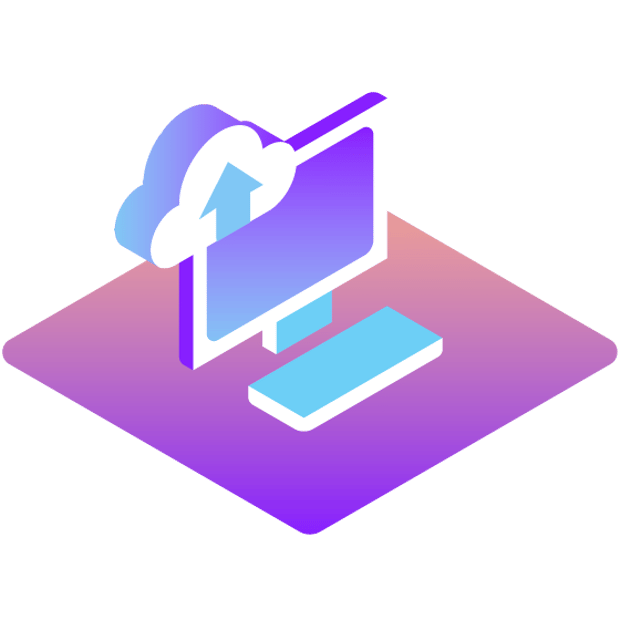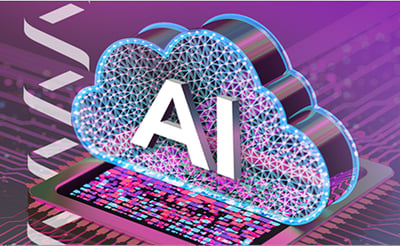4 Benefits of Serverless Applications
Creating a satisfying customer experience often begins with developing and deploying an innovative application. Until recently, many businesses purchased, operated, and administered their own servers to power their applications. Now that companies must rapidly transform to keep pace with the speed of business, however, they are increasingly exploring the benefits of serverless applications.
Here's what business leaders and developers need to know about serverless computing and how they can leverage it to achieve their most ambitious goals.

What Is a Serverless Application?
A serverless application can give businesses and developers a free hand to build and deploy web applications or mobile apps without worrying about back-end considerations, such as server provisioning, scaling, and maintenance. Major benefits of serverless applications include automatic scaling and a convenient pay-as-you-go model. Companies can also leverage a serverless or microservices architecture to innovate faster and more cost-effectively than they otherwise might with a traditional server-centric application infrastructure.
For example, Cloud Runtime is a cloud-native, serverless development platform that teams can use to quickly and effectively deploy API interactions on behalf of customers. With it you can facilitate application build, deployment, and production without the burden of maintaining the infrastructure to use Vonage APIs — select API applications reside on the Code Hub, which is now available as an open beta.
Developers can use Vonage Communications APIs to build and deploy their apps in exactly this way. For example, by using an AI-enabled voice API to create automated and personalized interactions such as a speech enabled IVR or notifications, they can access powerful communications capabilities that differentiate the customer experience and keep customers engaged. Or, they can use a video API to integrate live interactive video directly into their web, mobile, and desktop platform, tapping into low-code or no-code features to accelerate the process.
There are many serverless benefits that can suit any business need. Whatever the use case, whether it's SMS-enabled customer journeys or real-time customer validation to prevent fraud, there's an API to match — and the strength of a global communications platform to back it up. Rather than having to reinvent the wheel, developers can just access the best-in-class communications tools they need in a cost-effective fashion. From there, the business has a free path to release powerful new features that elevate the customer experience or even reinvent its business model if desired.
How Does the Serverless Application Model Work?
The serverless application model allows developers to write and deploy code without having to manage the underlying infrastructure. This allows developers to concentrate on the front end of a website or a mobile app instead of concerning themselves with the back-end functions that support it.
Since it is the front-end elements that users immediately engage with — for example, graphics, text, and other elements of visual design — serverless computing enables developers to spend more of their time and expertise on important aspects of the application that directly impact the customer experience.
Advantages of Serverless Applications
There are several benefits of serverless architecture. It allows businesses to quickly build and deploy new applications, it's inherently scalable, it's often cost-effective, and it frees developers to focus on writing great code instead of managing servers.
1. Serverless computing is pay-as-you-go
If a business operates its own servers, it will always have to carefully budget for them. Not only does this traditional model require considerable advance planning as well as significant upfront capital expenditures, but it also results in a fair amount of waste when server resources go unused. Serverless architecture, however, can be purchased on a pay-as-you-go basis, allowing businesses to pay only for the serverless computing resources they use. This model can reduce business costs and result in a better return on the company's technology spend.
2. Serverless applications can be quickly deployed
When a business decides to build a new application that will take the customer experience to the next level, it typically wants to get to market as fast as possible. One of the greatest benefits of a serverless application is that it can be quickly created and deployed.
In a serverless computing scenario, application developers don't have to upload code to servers or adjust any configuration settings on the back end. Rather, they can simply upload small pieces of code and release their application right away using serverless architecture and the serverless functions it provides. This approach also allows developers to issue rapid application updates as needed.
3. Serverless architecture is scalable
A company's journey with a web or mobile application isn't over once it's been released to the world. If that application is a hit and starts attracting a lot of customer engagement, then it may soon be time to scale. Likewise, if users start requesting new features, developers may need to add more resources as they go about satisfying those requests.
No business wants to miss the window of opportunity once their application has become popular. However, if a company relies on servers that are managed in-house, it may not be so easy to rapidly scale. Serverless architecture automatically scales as needed, eliminating concerns about server capacity constraints.
4. Serverless infrastructure doesn't require hands-on administration
With serverless computing, application developers don't have to handle the servers or on-premises data centers at all. Like other cloud-based services, the server administration aspect is abstracted away and managed behind the scenes by the provider. This has changed the game for developers. Now, they can focus on what they do best and find most rewarding — for example, creating innovative communications applications that delight customers.
 report
report
Disadvantages of Serverless Applications
While the benefits of serverless computing appeal to many companies, it is not a perfect match for every use case. Serverless architecture isn't suited for long-running applications, developers may find it difficult to test and debug serverless applications, and serverless computing may pose security concerns in some situations.
Serverless computing may present security concerns
One of the prime benefits of serverless computing is that it's abstracted away, so application developers don't have to concern themselves with resource management. Conversely, this advantage can be seen as a drawback from a security perspective.
It's not nearly as easy to gain the necessary visibility into the serverless infrastructure when the entire back end is being operated and administered by a provider. This, in turn, makes it difficult to vet their security practices. If the application in question involves customer data or sensitive information, this could be a particularly challenging issue.
Serverless applications can be complex
Developers must test and debug their applications to make sure they perform as expected, run securely, and provide an excellent customer experience. This is harder to do in a serverless computing environment, in which an application is broken into smaller individual functions and developers cannot see how back-end processes operate.
Without the ability to replicate the environment and observe precisely how the application will perform after it has been pushed out to production, developers may have a more difficult time carrying out this crucial part of the software development process.
Server vs. Serverless Architecture: Which Is Right for You?
If your business wants to quickly and cost-effectively develop and deploy an application or just add innovative features to the one you have now — for example, virtual assistants that provide instant answers to customer questions — then it's worth taking a good look at serverless computing. The benefits of serverless architecture include speed, scale, flexibility, cost control, and streamlined administration — all advantages that most companies will find appealing as they evaluate their options.
That said, serverless computing isn't a fit for every use case. If your company expects to build a long-running application or an application that will handle sensitive data, the benefits of serverless applications may be outweighed by their drawbacks. Likewise, developers may find it tricky to test and debug a serverless application because they don't have full visibility into the underlying serverless architecture.
Maximize the Benefits of Serverless Applications
If your business is thinking about creating a new application or elevating one it's already built, it's worth considering the benefits of serverless computing when it comes to application development. A serverless infrastructure can help you quickly develop and deploy a brand-new application and easily scale it while managing costs.
With the advantages that serverless platforms provide, your business can continue delivering exciting experiences for your customers that keep them satisfied and engaged.
Discover how Vonage Communications APIs can attract, delight, and foster loyalty in your customers.
